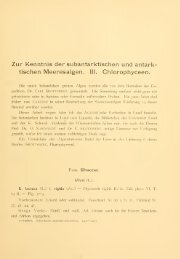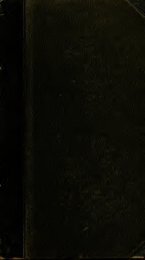Download PDF
Download PDF
Download PDF
Create successful ePaper yourself
Turn your PDF publications into a flip-book with our unique Google optimized e-Paper software.
128 ZYGNEMATACEAE<br />
Spore form, spore size, and wall ornamentation in hybrid<br />
zygospores are produced by the cytoplasm of the receptive gamete.<br />
For example, in collections containing filaments of two species<br />
interconjugating, the spore is always similar in form and approx-<br />
imate size to that of the specific filament in which the spore is<br />
formed. Hybridization between a species with plane-walled spores<br />
and a species with ornamented spore walls results in plane-walled<br />
or ornamented zygospores, depending upon the specific filament<br />
in which the receptive gamete is located. These facts fit in with<br />
observations on the movements of gametes during conjugation in<br />
which the male gamete moves into and through the cytoplasm of<br />
the female gamete and becomes enclosed by it. Thus the surface<br />
of the female gamete alone underlies the spore wall during its<br />
development. This is not interpreted as cytoplasmic inheritance.<br />
More probably the factors for these qualities of the cytoplasm are<br />
in the chromosomes. The cytoplasm is merely the mechanism by<br />
which spore wall forms, sizes, and patterns are formed.<br />
The processes of gamete organization, movement, and union<br />
usually occur during the night. To study the successive steps<br />
through the microscope one must avoid subjecting the cells to<br />
intense light and high temperatures during the observations.<br />
Under these conditions the motile gametes may stop moving and<br />
become lodged at the sides or ends of the receptive gametes. This<br />
abnormal condition may be seen in published photographs of the<br />
process. Observations are best made at short intervals by turning<br />
the light on and oflf or by tilting the mirror backward and forward.<br />
Analysis of Characteristics of the 275 Species<br />
OF Spirogyra Here Described<br />
Number of species with end walls plane is 208; semireplicate, 2; rep-<br />
licate, 65.<br />
Extreme diameters of vegetative cells with end walls plane are 10-200/1;<br />
semireplicate, 12-18/1; replicate, 8-61 /i.<br />
Number of chromatophores in species with end walls plane is i to 16;<br />
semireplicate, i ; replicate, i to 4.<br />
Number of species usually having i chromatophore is 129; approx-<br />
imately 2 to 5 chromatophores, 109; and 6 to 16 chromatophores, 37.<br />
Of the 208 species with plane end walls, the usual mode of conjugation<br />
is scalariform in 166, scalariform and lateral in 26, and lateral in 10.<br />
Conjugation is very rare or unknown in 6.




